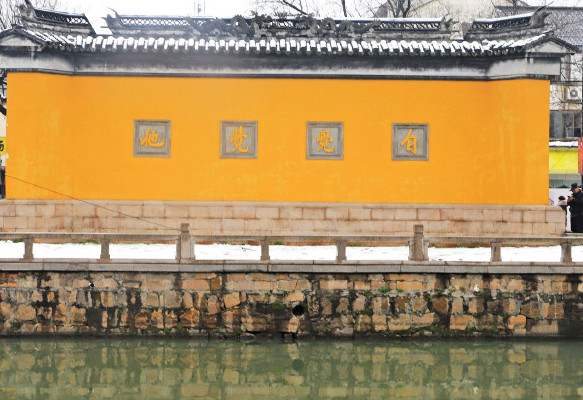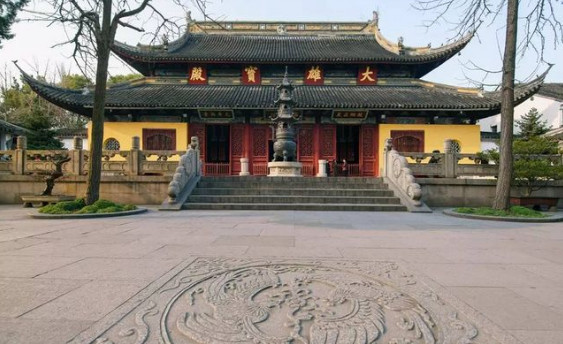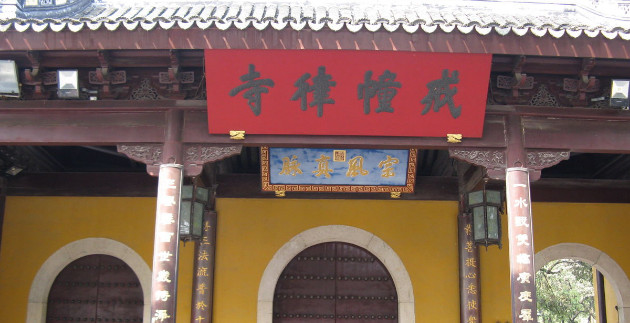Xiyuan, the unforgettable Sanfang Jigong
★ Tourist location: Suzhou Xiyuan Temple
Xiyuan Temple is commonly known as Xiyuan. When I was young, my father brought me to Suzhou and once introduced me to Suzhou's four major gardens, Humble Administrator's Garden, Lingering Garden, Lion Grove and Xiyuan. Although I couldn't understand it after visiting Xiyuan, Xiyuan is actually a temple and may have a high status in Buddhism. Why is it called a garden? Perhaps my father commented on these four major gardens in Suzhou himself after touring Suzhou. Compared with ordinary temples, the courtyard of Xiyuan is indeed beautiful. Later, after understanding the historical changes of Xiyuan, I realized that Xiyuan was also a private residence of a large family in history.
Xiyuan is also known as Jiezhuang Lü Temple. It was built between the Yuan Dynasty and the Yuan Dynasty. It was originally named Guiyuan Temple and has a history of more than 700 years. During the Jiajing period of the Ming Dynasty, Xu Taishi, the minister of Taipu Temple, built the East Garden, which is today's Lingering Garden, and converted the already declining Guiyuan Temple into a homestead garden and named it Xiyuan. Later, Xu Taishi passed away, and his son Xu Rongcai turned the garden into a temple. In the eighth year of Chongzhen, he invited Maolin, a lawyer from Baoguo Xiang Temple, to serve as the abbot and renamed it Jiedonglu Temple, commonly known as Xiyuan Temple. Through the efforts of Maolin lawyers and subsequent generations of abbot masters, Xiyuan became a Buddhist temple, and the Dharma Conference was in full swing for a time, becoming a famous temple in Jiangnan. Unfortunately, during the Xianfeng period of the Qing Dynasty, it was destroyed by soldiers, leaving only dilapidated walls and ruins. During the Guangxu period, Zhejiang Provincial Justice Sheng Kang and Wu County gentry restored it, and invited the abbot of Zizhulin Temple Rong Tong and his disciple Guang Hui to preside over the reconstruction work and revitalize the temple. Xiyuan once again became the first temple of Wu Gate and the largest temple in Suzhou.
There are two bridges in front of the door, Ford Bridge and Smart Bridge, both made of white marble. There are still some rules for the traveling method of these two bridges. Enter from Ford Bridge and exit from Smart Bridge. We looked confused, as if we had not left the right place when we just left? Of course, this is not an established rule, and there may be some explanation in it.
Across the bridge is an archway, three rooms wide, with stone pillars covering the eaves, and on the banner is "Pardon Xiyuan Jiedonglu Temple". The word "Pardon" is enough to illustrate the official status of Xiyuan. There is a couplet on the stone pillars on both sides: "The Buddha's sun shines brightly, and the door is reopened; the sect style is revitalized, and the jungle is greatly awakened."
There is a bright yellow light wall across the river. The four words on it have some meaning,"Conscious of Him." We were guessing the meaning, when a tourist next to us explained his doubts, saying that it was the Dharma enlightened by the Mahayana Bodhisattva and can also make all living beings realize. In fact, what we see across the river is the back of the Zhaobi, and the name of the temple should be written on the front.
Crossing the archway is the Shanmen Hall, which consists of three parallel doors. Directly above it is the plaque of "Jiechuang Lü Temple" and there are couplets on both sides. This is the legacy of Mr. Liu Bingsen, vice chairman of the Chinese Buddhist Association and a famous contemporary calligrapher. The "Zong Feng Zhengmai" behind the mountain is the royal pen of Emperor Yongzheng of the Qing Dynasty.
Across the gate is the front garden, which covers an area of more than 10,000 square meters. Cinnamomum trees are planted on both sides of the road. The bell tower and drum tower are on both sides, which is also the configuration that is common to larger temples.
The Tianwang Hall, also known as the Jingang Hall, is dedicated to Maitreya Buddha on the front, Weituo Bodhisattva on the back, and on both sides are four tall statues of the Four Great Heavenly Kings.
The Daxiong Hall is five rooms wide and seven rooms deep. It has double eaves and rests on the top of the mountain. It is majestic and magnificent. The statue of Sakyamuni is enshrined in the main hall. The whole body is made of gold and the treasure appearance is solemn. In the courtyard between the Tianwang Hall and the Daxiong Hall, the trees planted seem to be old. Among them, four ginkgo trees and three camphor trees are more than a hundred years old.
The most unique building in Xiyuan is the Five Hundred Arhat Hall on the west side of the main hall. This is one of the four major Arhat halls in China (the other three Arhat halls are Jingbiqi Temple, Wuhan Guiyuan Temple and Chengdu Baoguang Temple). It was built in the middle of the Ming Dynasty. In the middle of the Ming Dynasty, the round frame of the first existing stone entry arch is a relic of the Ming Dynasty. The rest of the buildings were destroyed after the war and rebuilt successively during the Tongzhi and Guangxu years.
The scale of the three-to-forty-eight rooms is also quite large in China. Arhat Hall is centered on the four famous mountain plastic seats, and five hundred arhat statues are arranged along the four walls of the wall. These arhat statues are clay sculptures, even larger than real people, with different looks and shapes, which are very vivid. Arhat Hall
The most praised thing in Luohan Hall is a statue of Ji Gong. This statue will present different expressions from all angles. The left side is smiling, the right side is crying, and the middle side is smiling, which seems to be crying but not crying. No matter which direction you look at the statue from, Ji Gong's eyes seem to be looking at you. This technology is really amazing. To be honest, when my father brought me to Suzhou, I was still young, but my memory of this statue of Ji Gong was so deep that when I went to Hangzhou and other places to see the statue of Ji Gong, I had to compare it. This one in Xiyuan is the most distinctive.
The main hall of Luohan Hall is a four-sided, thousand-handed, thousand-eyed Guanyin. It is carved from four pieces of camphor wood and is also one of the temple treasures of Xiyuan Temple. In addition to the statue of Ji Gong and Arhat, there are also eighty-four statues of the Great Compassion Mantra and the statue of the four-sided and thousand-handed Goddess of Mercy embodied in Guanyin, which are also extremely rare.
The last entry on the central axis is the Sutra Tower, which is said to contain the complete four volumes of the "Dragon Zang" and the "Hua Yan Jing" in the blood of Master Shanji of the Yuan Dynasty.
The West Garden is a corner of the original West Garden site, with the release pond as the center. The scale of this release pool is very large, with a pavilion in the middle and a folded bridge in the pool leading to the pavilion in the center of the lake. This hexagonal pavilion has a brick-and-wood structure with double cornices and gates on the east and west sides. There is also a pavilion in the pavilion, which seems to have shrunk the pavilion outside, but the inner pavilion has a single eaves. Amitabha and Master Lianchi are enshrined in the pavilion. Master Lianchi is the master of Lawyer Mao Lin, the first abbot of Dahong Law of Jiezhuang Lü Temple.
However, the scale of the release pond is very large. If it weren't for the bright yellow walls, some people would believe it was the back garden of the official house. It is said that there are two spotted turtles in the release pond that are over 400 years old. There are only three spotted turtles like this with spots on their backs in the world.



















Previous Article:While the spring light is not old and there is still time, go to Guangfu to catch the cherry blossom season
Next Article:Tieqin and Bronze Sword Tower, a library with a martial arts style
